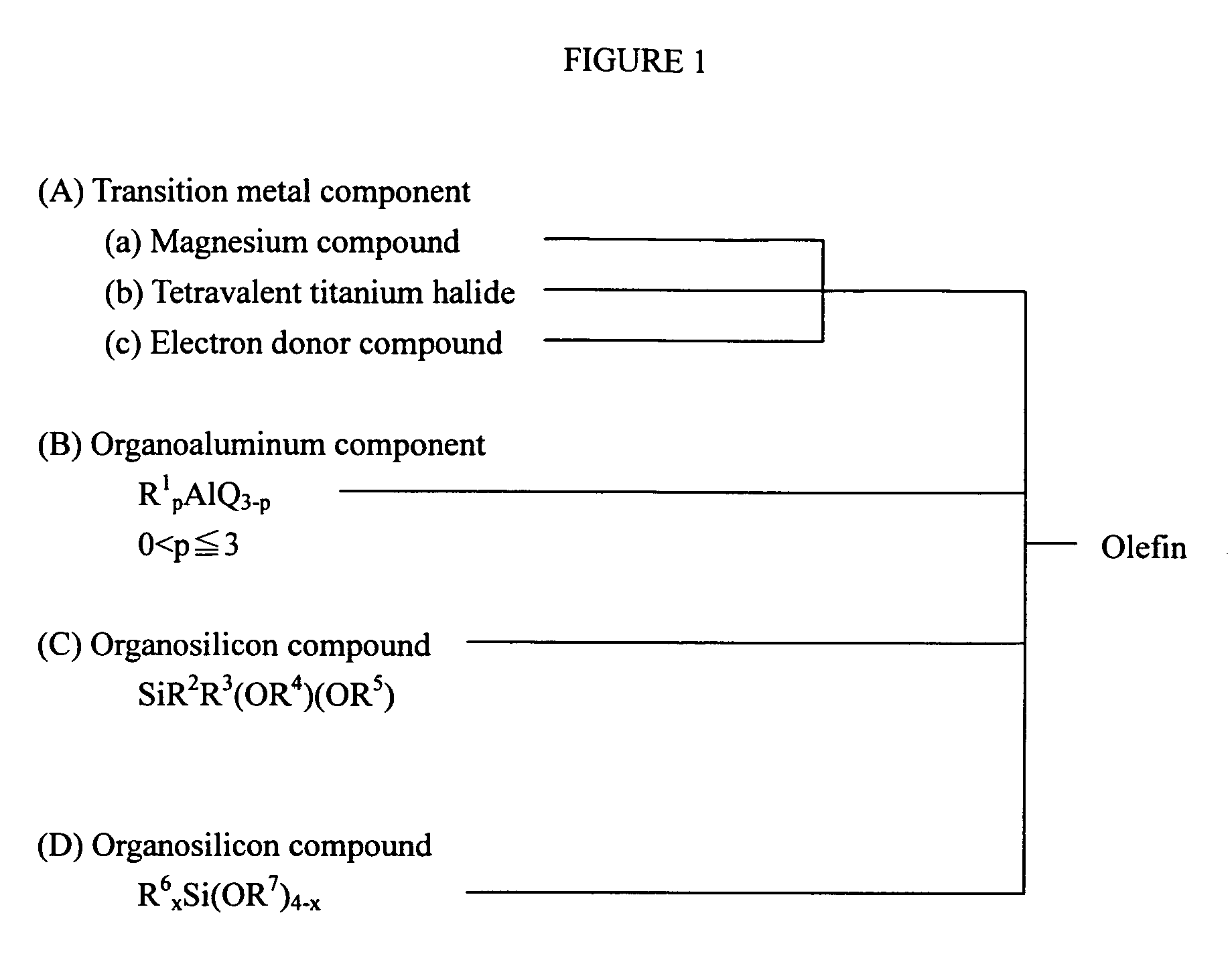Catalyst for olefin polymerization and process for polymerizing olefins
a technology of olefin and polymerization process, which is applied in the direction of catalytic reaction, catalytic activation/preparation, chemical/physical process, etc., can solve the problems of not being able to achieve high stereoregularity, affecting the appearance of the final product (polyolefin), and limiting the application of olefin polymers to a certain degree, etc., to achieve a wide molecular weight distribution, higher yield and stereoregular
- Summary
- Abstract
- Description
- Claims
- Application Information
AI Technical Summary
Benefits of technology
Problems solved by technology
Method used
Image
Examples
example 1
(Preparation of Solid Catalyst Component)
[0274]A 500 ml round bottom flask equipped with a stirrer, of which the internal atmosphere had been sufficiently replaced by nitrogen gas, was charged with 20 g of diethoxymagnesium and 160 ml of toluene to prepare a suspension. Then, 40 ml of titanium tetrachloride was added to the suspension. Next, after heating the suspension to 90° C., 5.4 ml of di-n-butyl phthalate was added and the mixture was further heated to 110° C. and reacted for 1.5 hours with stirring. After the reaction, the resulting reaction mixture was washed three times with 180 ml of toluene at 90° C. After the addition of 140 ml of toluene and 40 ml of titanium tetrachloride, the reaction mixture was heated to 100° C. and reacted for two hours with stirring. The reaction product mixture was washed eight times with 200 ml of heptane at 40° C., filtered, and dried to obtain a solid catalyst component (A) in the form of a powder. The content of titanium in this solid catalys...
example 2
[0287]The same experiment as in Example 1 was carried out, except for using 0.052 mmol of cyclohexylcyclopentyldimethoxysilane and 0.078 mmol of tetraethoxysilane instead of 0.026 mmol of cyclohexylcyclopentyldimethoxysilane and 0.104 mmol of tetraethoxysilane, and using 1.8 l of hydrogen gas. The results are shown in Table 1.
example 3
[0288]The same experiment as in Example 1 was carried out, except for using 0.104 mmol of triethoxysilane instead of 0.104 mmol of tetraethoxysilane and using 1.6 l of hydrogen gas. The results are shown in Table 1.
PUM
| Property | Measurement | Unit |
|---|---|---|
| particle size | aaaaa | aaaaa |
| particle size | aaaaa | aaaaa |
| particle size | aaaaa | aaaaa |
Abstract
Description
Claims
Application Information
 Login to View More
Login to View More - R&D
- Intellectual Property
- Life Sciences
- Materials
- Tech Scout
- Unparalleled Data Quality
- Higher Quality Content
- 60% Fewer Hallucinations
Browse by: Latest US Patents, China's latest patents, Technical Efficacy Thesaurus, Application Domain, Technology Topic, Popular Technical Reports.
© 2025 PatSnap. All rights reserved.Legal|Privacy policy|Modern Slavery Act Transparency Statement|Sitemap|About US| Contact US: help@patsnap.com

